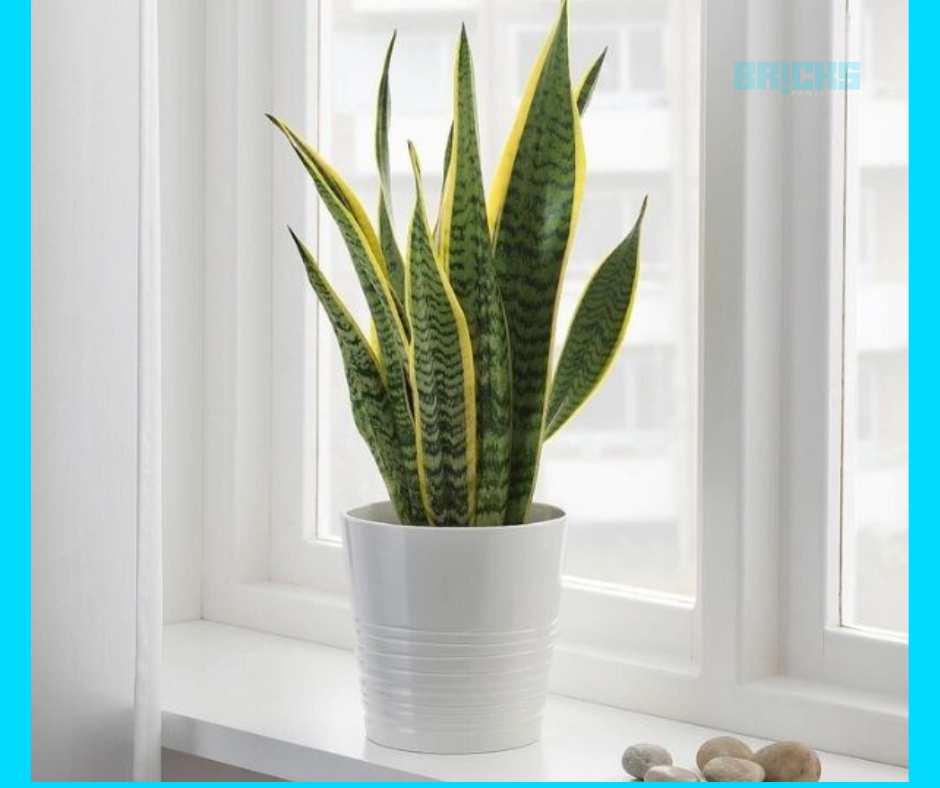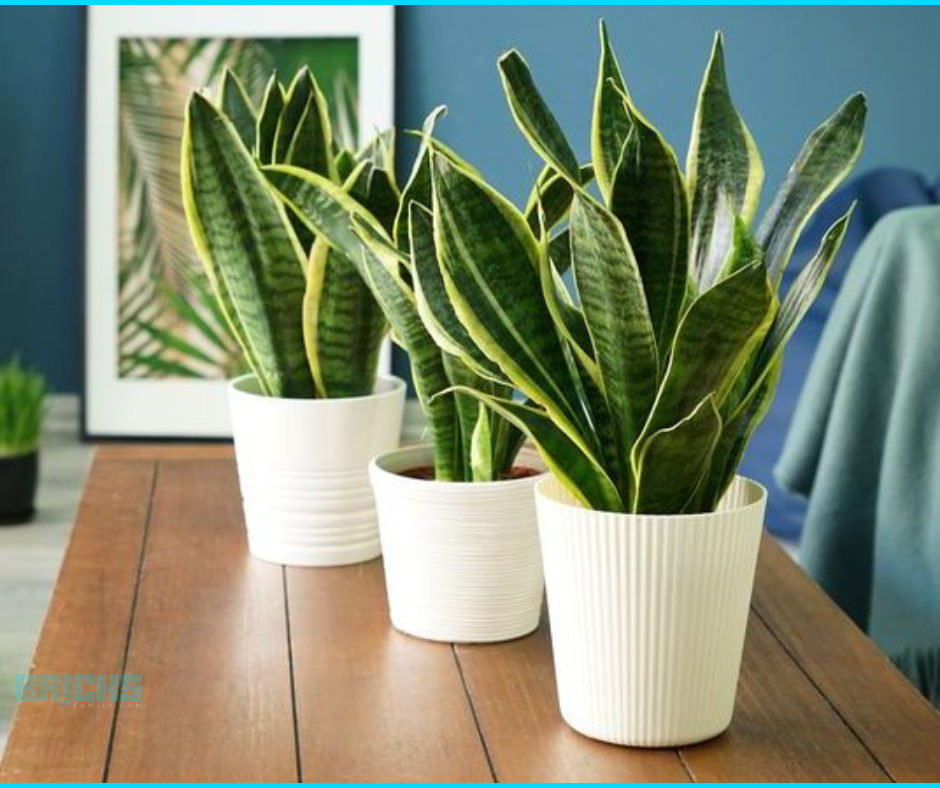This snake plant is a sturdy and well-loved houseplant. It is easy to recognize due to its evergreen leaves with a straight sword shape that appears fake. Snake plants are widely used as home plants because snake plant maintenance is simple. They require only a little water to thrive and look attractive. In this article, we will see Snake Plant – Care, Types, Benefits | Propagation of Snake Plant.
The plant can grow up to 6 inches tall or 8 feet tall. It has stiff leaves that resemble swords. Snake plants come in many colors; most feature green-banded leaves with yellow borders. They like bright or almost dark areas of the house to thrive. They are easy to care for and virtually unbreakable under various conditions.
Snake plants develop slowly in indoor lighting. However, exposure to the sun for a short period will increase their growth. The ideal time to begin planting them and transplanting them is in spring.
Snake plants The s are ideal for decorating your home. They bring you closer to nature and contribute to the feng-shui of the house. They, along with other plants, offer health benefits as well. The snake plant is also known as the tongue of the mother-in-law due to its sharp point! It is considered a good luck plant because it can absorb harmful gasses from the air, thus removing poisons like formaldehyde and benzene. Combined with other plants such plants, it can also create natural humidity.
Read on to learn more about the various snake plant species and their advantages, snake plant care, the best way you can reproduce the snake plant, and more.
Types of Snake Plants
The most popular form is known as a snake’s plant features long, green leaves with silver or grey streaks on the horizontal. It can reach up to feet and thrives in dim light conditions. They come in various shapes. Some of them include the following:
- Bird’s nest Is called Hahnii, a tiny plant that can reach just 6 inches tall. The leaves are arranged in clusters that look like a cup that resembles birds’ nests.
- Cylinder form: The leaves of the Sansevieria Cylindrica are spherical and may grow to many feet long. Its leaves form a crown that extends to the outside.
- Sansevieria Laurentii: Laurentii is a well-known snake plant with an orange core and green edges.
- Twisted Sister: This plant has bent leaves, and the yellow margins are horizontally striped. The plant can reach a height of 15 inches.
- White Snake Plant This plant has dark green leaves and white lines that run vertically.
- Rhino grass makes a gorgeous home plant with a cluster of leaves growing vertically in the form of a compact group.
- Sansevieria desert It is a plant often known as Elephant’s Toothpick that is a fan’s appearance.
Significant benefits of snake plants

It is a durable succulent that can grow between 6 inches and some feet high. It offers numerous health benefits and is easy maintenance and decor. Let’s take a look at Snake Plant – Care, Types, Benefits | Propagation of Snake Plant.
Filters air day and night
Snake plants, as well as other succulents in the indoor space, aid in filtering air. The plant is distinctive as it is among the few that can convert CO2 into oxygen at night. It is a fantastic option for decorating your bedroom because it can help regulate healthy airflow.
Eliminate hazardous pollutants
The plants of the snake are known as a natural filtering agent and may absorb cancer-causing chemicals in tiny quantities. Snake plants can absorb formaldehyde, carbon dioxide, and xylene. They also absorb benzene, xylene, toluene, and trichloroethylene.
Snake plants can protect against allergens that can be absorbed through the air due to their ability to eliminate and absorb harmful chemicals.
Booster of mental health
Snake plants can have a positive impact on our natural surroundings. The plants are a low-cost and low-risk solution to improve the environmental quality within homes, businesses, schools, and medical facilities. Because of the therapeutic benefits of this plant, horticultural treatment is also used in the mental health field.
Low-maintenance and simple to upkeep
There are many reasons why snake plants are one of the most popular houseplants. One reason is that it’s easy to maintain. Because of their low maintenance requirements, Snake plants are typically installed on windowsills in apartments, homes, and public buildings.
Snake plants can endure both shade and intense sunlight. They also thrive even when immersed in water and can withstand dry air and droughts. The plants don’t need frequent repotting and are not often affected by it.
Anti-allergy properties
Snake plants reduce the effect of airborne allergens, such as dust and dander, by creating oxygen and adding humid air. This is a significant benefit as indoor air quality is linked to various illnesses, such as allergies and asthma.
Invites good feng shui
It is revered among the Chinese for its ability to absorb negative energies. Snake plants absorb negative energy and eliminate hatred and jealousy. They can be placed in a space with many disputing people or around devices emitting dangerous radiation.
Relieves mild aches
There are many snake plant advantages. They have not been scientifically verified but are commonly regarded by plant specialists. The plant’s leaves may be used on wounds, burns, and inflammation. For instance, plants are said to
- Heal cut and burn on the skin
- Reduce inflammation,
- Improve the immune system
- Promote normal blood pressure
- Enhance immune system
- Alleviate headaches
Essential steps to follow for snake plant care
The care of a snake plant is simple since it requires minimal effort. This plant can be an excellent choice for those just beginning their gardening because it is difficult to eradicate. It is beautiful in a pot and thrives on tables or floor arrangements. Walkthrough Snake Plant – Care, Types, Benefits | Propagation of Snake Plant.

Snake plant care as per the weather
In warmer weather, the snake plant flourishes but struggles in colder temperatures. While drought-resistant, the plant can be susceptible to being overwatered, which can cause root decay. The care of a snake plant is simple when. The water is only when the soil appears dry. In winter, the plants could remain without water for two months. In the summer, they can be watered only twice per two weeks.
Soil for snake plant care
A loose, well-drained, and well-drained potting mix is ideal for the soil snake plant. This plant thrives in sandy soils. It is possible to use the potting mix, which is not high in peat. Peat can be beneficial in a variety of situations. However, it could be compacted and may have problems in rehydrating or draining. A great option is cactus planter soil.
Light required for snake plant
Snake plants like light that is indirect yet consistent, with occasional direct sunlight. They can adapt to full daylight and thrive in poorly lit environments.
Water for snake plant care
Another excellent snake plant care trick is to let the soil dry between irrigations. Limit watering to once per month during winter or when the soil appears dry to the feel. Excessive watering could kill the plant.
Humidity and temperature
Snake plants love warm temperatures but can be affected if exposed to temperatures lower than 50degF. Snake plant care becomes simple if temperatures are between 70-90 degrees Fahrenheit. Place the plant in a location that isn’t exposed to the elements. This plant will be destroyed by frost.
Fertilizer for snake plant care
Feed the cactus with a moderate fertilizer or a balanced slow-release liquid 10-10-10 fertilizer or 20-20-20 fertilizer diluted to half strength in this growing period. In winter, avoiding fertilizer can be the most effective snake plant treatment.
How to Propagate Snake Plant
The propagation of snake plants is carried out in spring or summer when the plants are growing. Plants up to 4 inches tall are easily separated when repotting. In addition, new branches could develop out of the ground and be potted separately. The cuttings may also be used to grow snake plants.
In this blog, we will study Snake Plant – Care, Types, Benefits | and Propagation of Snake Plants.
There are three ways to propagate snake plants, which are as below:
Propagate snake plant through root division
- You will need a sharp knife, cactus potting soil, and a clean container.
- Remove the root ball from the old container and place it on a leveled surface. Remove the earth from the rhizome or root structure by hand.
- Section the plant into portions with a sharp knife and ensure the roots of each section stay intact. It will not be killed if you cut it through.
- Replant the fresh snake plant pieces with cactus potting soil in a clean container.
- Water and place it in a sunny spot.
Propagate snake plant from new offshoots
- You can plant new pups or young offshoots that the plant has generated independently.
- You will need a sharp knife, a clean container, and cactus potting soil, just like you would for root division.
- Remove the root ball from the container, find the root of the offshoot, cut off the pup, and place the cut root end in cactus potting soil.
- Water and place it in an area with indirect bright light.
Propagate snake plant through leaf-cutting
- Slice a long, healthy leaf from the plant with sterilized scissors, pruning shears, or a sharp knife.
- Immerse the cut-end of the leaf-cutting in a clean jar of water to root it in water. Check for root development after placing it in a sunny location.
- Pour the water every few days to maintain its level. To prevent bacterial or algal growth, discard the old water and replace it with clean water every two weeks.
- Put the root end in a well-draining cactus potting mix once the roots have grown to be at least an inch long.
- Water and place in a sunny spot.
You can choose to skip the water rooting approach. Allow the cut end of a healthy leaf to callous over for 24 hours before planting it facing the cut down in the cactus potting mix. It is a slow-growing plant, and you will detect new growth for two months.
Final words on snake plants
Snake plants can be as productive as they are beautiful. They can be planted outdoors and indoors, requiring minimum or no care. It would be best to consider bringing a snake plant into your home to improve your health and aesthetic motives. Snake plants can also aid in filtering air inside, which is essential to your health and safety.
Also Read: 10 Modern Balcony Decor Ideas for your Home
Similar Topics: Begin the New Year in a New Home! Here’s how to decorate the setting















